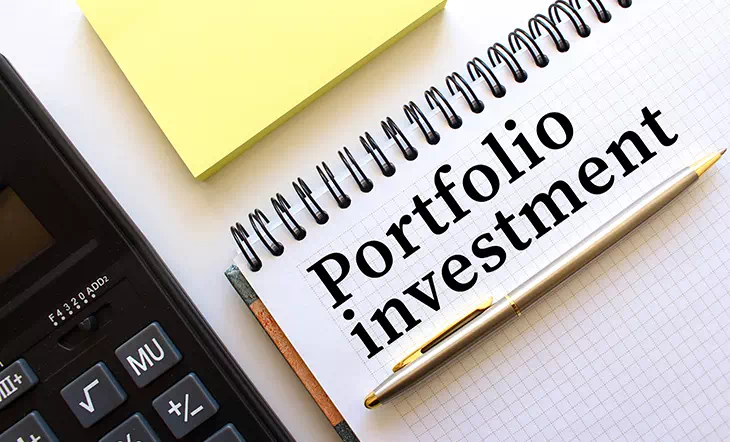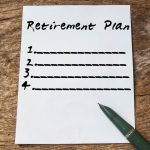Home > Retirement > One of The Most Prominent Retiree Risks: Sequence of Returns
One of The Most Prominent Retiree Risks: Sequence of Returns
Imagine spending decades meticulously planning and conscientiously saving for retirement only to experience a bear market shortly after leaving the workforce. Suddenly, you’re ready to begin relying on your investment income and it isn’t all there.
What will you do? Will your portfolio be able to sustain your anticipated annual withdrawal rate? Or will you be forced to reduce your lifestyle to avoid outliving your assets?
Conversely, imagine waking up and learning your portfolio value has dramatically increased due to upward market movement. Suddenly, the amount you originally planned to withdraw each month sounds too conservative. Adjust too much in one direction, though, and you may not be prepared to weather downturns in the years ahead.
What is Sequence Risk?
The two antithetical scenarios above illustrate Sequence of Return Risk, one of the biggest and arguably most concerning risks a retiree could face. Unfortunately, this risk is one that retirees seldom think about. They are so worried about other common areas of concern such as rising health care costs, inflation, and social security strategies that this very real and potentially injurious foe gets lost in the noise.
Because the sustainability of portfolio withdrawals is driven by the sequence of returns of any given portfolio, timing is everything. Essentially, the danger of sequence risk is that the markets turn sour just as a retiree becomes fully dependent on the income generated from his or her invested assets.
Let’s look at this phenomenon of sequence risk through two examples: Jack and John.
Jack and John both have retirement portfolios comprised of 60% stocks and 40% bonds, and both anticipate the same long-term returns over a forty-year retirement.
However, in the five years subsequent to Jack’s retirement, the markets are ill-fated and Jack’s portfolio suffers significantly. Because Jack lacks substantial income from outside his retirement portfolio to fund his lifestyle, he continues to withdraw at a modest 4% rate. But, even low withdrawals from a portfolio with initially negative returns can severely deplete a portfolio and affect its ability to return to that break-even point, let alone compound for growth. In order to plug the leak in the ship, Jack must lower his withdrawal rate or find a way to begin funding his accounts to accelerate his recovery from loss.
In the five years subsequent to John’s retirement, however, markets are booming. His portfolio sits 25% higher than at his retirement date and he can maintain his 4% initial withdrawal rate with confidence. Even accounting for the inevitability of volatile years ahead of him, John’s sequence timing positions him to begin building wealth early on, while Jack must begin his retirement on the road to portfolio recovery (and to no fault of his own).
How will my Portfolio Recover from a Loss?
It takes exponentially higher returns realized over time for an account to recover from loss. A portfolio that takes a 4% hit one year, won’t recover with a 4%+ recovery the next.
In fact, a portfolio that suffers a 10% loss will need to realize 11.11% to return to its original value. A portfolio that takes a 50% hit will take 100% to return to original value. The greater the loss, the higher return required to repair the damage. And this is not even factoring in the rate of inflation which negatively impacting the purchasing power of those dollars simultaneously!
How do I Plan Ahead?
Sequence risk has always been one of the challenges in determining a reasonable spending or drawdown rate in retirement. Even if the anticipated long-term return rates are favorable, ongoing withdrawals paired with a series of poor returns early on in retirement can forever stunt the recovery and subsequent earning potential of a retirement portfolio.
There is no way to prevent volatility from occurring, but there are ways to mitigate its impact on your financial health.
- Protect on the Downside: If and when experiencing negative returns, consider adjusting your withdrawal rate. This might mean adjusting your distribution schedule from alternate resources to cover expenses. Avoid drawing down more than is absolutely necessary in unfavorable conditions.
- Diversify: Maintaining a diversified portfolio lowers the impact of volatility on your investments and enhances your potential returns over a period of time.
- Adjust Your Risk: The closer you get to retirement, the less risk you can afford to take. Speak with your advisor to ensure your portfolio is being adjusted to more conservative allocations as time goes on.
Ultimately, sequence of return risk is a matter of luck, but do not forget you can continue to save and invest even after you retire!
Written by Brian McKinney, CFP®
Brian McKinney, CFP® is a Financial Advisor with Williams Asset Management. Williams Asset Management is located at 8850 Columbia 100 Parkway, Suite 204, Columbia, MD 21045. He offers advisory services as Investment Adviser Representatives of Commonwealth Financial Network®, a Registered Investment Adviser. For additional information about the services of Williams Asset Management, please call (410) 740-0220 or email at Info@WilliamsAsset.com. © Williams Asset Management. For more information about Williams Asset Management, please visit www.WilliamsAssetManagement.com.
Other posts from Brain McKinney
How to Have Fun With Your Investment Portfolio
As our clients are well-aware, we take a long-term view with our investment philosophy, focusing on crafting diversified...
Venture Capital: Investing for the Long Term
Over the past decade, there has been an interesting shift in the way venture backed companies are approaching...
2020: Embracing the Silver Linings
As 2020 draws to a close, it’s likely that many of us are harboring a host of mixed...





